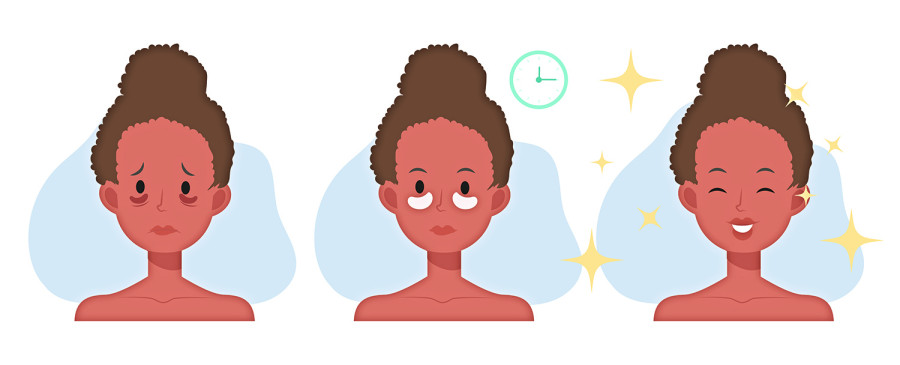Life & Style
Beating dark circles
Dermatologist Sabina Bhattarai breaks down everything you need to know about this pervasive problem.
Rukusha Giri
Dark circles are a universal skin problem. And it seems no one can completely eliminate them however hard they try. Sabina Bhattarai, dermatologist, founder of Lavana Skin and Hair Clinic and former professor at Kathmandu University’s Dermatology Department, breaks down everything you need to know about dark circles.
Why do we get dark circles?
Undereye dark circles appear when the area around the eyelid darkens due to various reasons. It is not a serious condition and almost everyone gets it at some point in their life. While some people can get rid of their dark circles overtime, others will have it for a lifetime.
Individuals usually get dark circles after puberty—from 16 to 25 years of age—due to unhealthy habits and irregular sleeping schedules. Additionally, young adults also use digital devices more than any other age group which intensifies their dark circles. They should focus on adopting healthy habits to rid themselves of it.
Secondly, some individuals get dark circles from an early age which can be due to heredity. In this case, the person will have dark skin around the eyes prominently from their childhood.
The last cause of dark circles is old age. People get wrinkles as they grow older. This causes the skin to get thin which makes dark circles more prominent. This phenomenon is especially visible in people over the age of 60.
Periorbital hyperpigmentation (POH) is another possibility of having dark circles on the face. POH are bilateral, homogeneous hypochromic patches that mainly affect the lower eyelids but can also occasionally extend to the upper eyelids, eyebrows, malar regions, temporal regions, and lateral nasal root. The leading causes of POH are genetic predisposition, sun exposure, and advanced age. Despite the lack of complete epidemiology, these hormonal factors affect women more frequently than men.
How do we minimise dark circles?
There are very few cases where a person’s dark circles vanish entirely. Usually, we can’t get rid of them completely. But we can reduce it over time.
Creams containing caffeine can lighten dark circles. Caffeine is known to increase circulation and tighten blood vessels. Using skin care products containaing specific chemicals can also lighten dark circles—but, you will have to discuss this with a dermatologist first as particular chemicals suit particular skin types.
As a chemical exfoliant, alpha hydroxy acid (AHA) can treat many types of dark circles on the face and lighten them. The procedure is appropriate for people with all skin tones and types. Glycolic acid 20% is the most widely used alpha hydroxy acid (AHA) for chemical peeling. Glycolic peeling removes the dead skin layer that builds up around the eyes, revealing younger skin.
I would recommend older individuals to opt for glycolic acid 20% as it can treat fine lines and dark circles under the eyes. Using platelet-rich plasma (PRP) fillers or PRP therapy is another non-surgical way to treat undereye dark circles.
Are dark circles harmful?
While dark circles aren’t harmful in themselves, they could be a symptom of a lot of other diseases—especially hormonal ones—including diabetes, thyroid, and anaemia, among others. So, if your dark circles are very prominent, I would advise you to go see a doctor.
A lot of people use products containing caffeine on their dark circles directly at home. While it is a good remedy for lightening dark circles, you should know what concentration of caffeine is suitable for your skin. For this, you should visit a dermatologist.
If you are creating treatment for them at home, then the recipe should come from a credible source, you should be clear about why you are using the ingredients you select and measure the ingredients correctly.
What vitamins are good for dark circles under the eyes?
A lack of vitamin A can cause dry eyelids, easy eye fatigue, and increased sensitivity to light changes, all contributing to dark undereye circles. Vitamin A will eliminate dark circles by easing these symptoms and maintaining eye health.
Additionally, vitamin C is effective in treating pigmentation because it contains ascorbic acid, a powerful ingredient for reducing dark circles. It gradually brightens the undereye area and creates even-toned skin, which helps reduce the appearance of dark spots and dark circles.
So, I would suggest everyone to incorporate vitamin A and C serums into their daily skin care routine to reduce the appearance of dark circles. Other vitamins that can also treat dark circles are vitamin K and vitamin E.




 12.12°C Kathmandu
12.12°C Kathmandu










